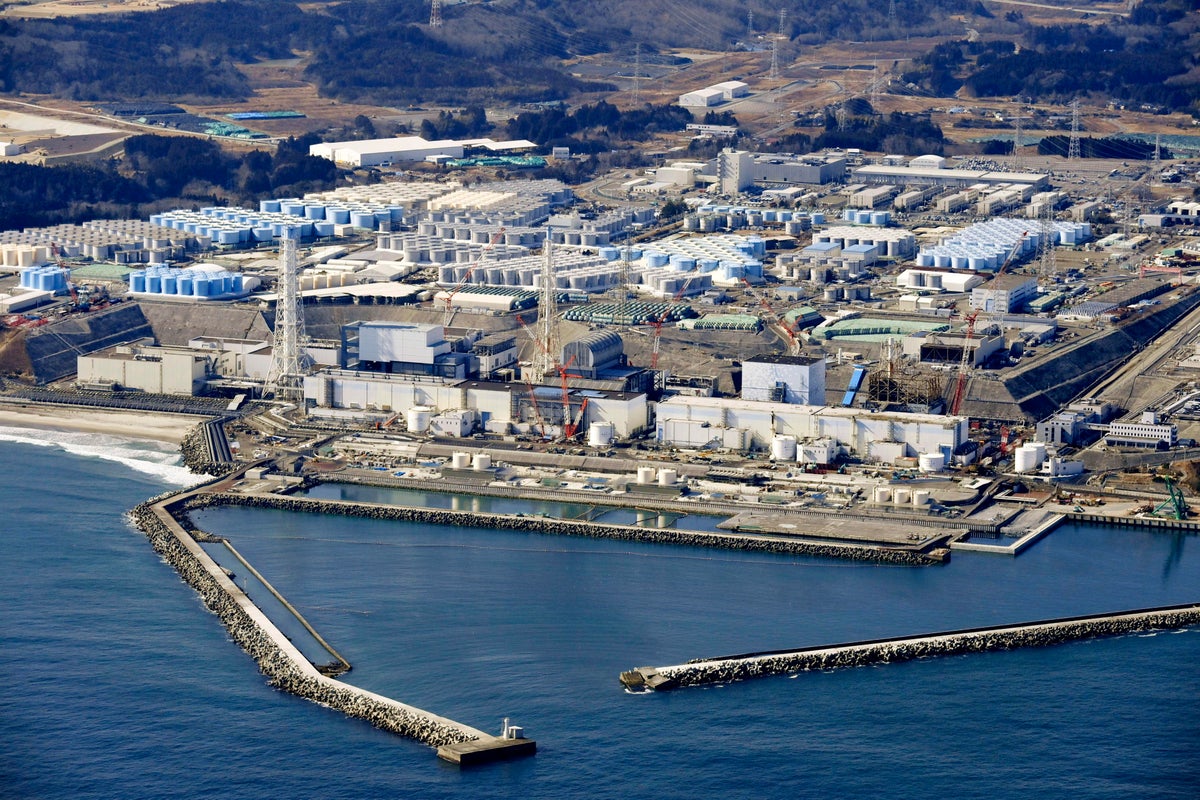
The construction of facilities needed for a planned release of treated radioactive wastewater into the sea next year from the damaged Fukushima nuclear power plant began Thursday despite opposition from the local fishing community.
Plant workers started construction of a pipeline to transport the wastewater from hillside storage tanks to a coastal facility before its planned release next year, according to the plant operator, Tokyo Electric Power Company Holdings.
The digging of an undersea tunnel was also to begin later Thursday.
Construction at the Fukushima Daiichi plant follows the Nuclear Regulation Authority's formal approval last month of a detailed wastewater discharge plan that TEPCO submitted in December.
The government announced last year a decision to release the wastewater as a necessary step for the plant’s ongoing decommissioning.
A massive earthquake and tsunami in 2011 destroyed the Fukushima Daiichi plant’s cooling systems, causing triple meltdowns and the release of large amounts of radiation. Water that was used to cool the three damaged and highly radioactive reactor cores has since leaked into basements of the reactor buildings but was collected and stored in tanks.
TEPCO and government officials say the water will be further treated to levels far below releasable standards and that the environmental and health impacts will be negligible. Of more than 60 isotopes selected for treatment, all but one — tritium — will be reduced to meet safety standards, they say.
Local fishing communities and neighboring countries have raised concerns about potential health hazards from the radioactive wastewater and the reputation damage to local produce, and oppose the release.
Scientists say the impact of long-term, low-dose exposure to not only tritium but also other isotopes on the environment and humans are still unknown and that a release is premature.
The contaminated water is being stored in about 1,000 tanks that require much space in the plant complex. Officials say they must be removed so that facilities can be built for its decommissioning. The tanks are expected to reach their capacity of 1.37 million tons in autumn of 2023.
TEPCO said it plans to transport treated and releasable water through a pipeline from the tanks to a coastal pool, where it will be diluted with seawater and then sent through an undersea tunnel with an outlet about 1 kilometer (0.6 miles) away to minimize the impact on local fishing and the environment.
TEPCO and the government have obtained approval from the heads of the plant’s host towns, Futaba and Okuma, for the construction, but local residents and the fishing community remain opposed and could still delay the process. The current plan calls for a gradual release of treated water to begin next spring in a process that will take decades.
TEPCO said Wednesday that weather and sea conditions could delay a completion of the facility until summer 2023.
Japan has sought help from the International Atomic Energy Agency to ensure the water release meets international safety standards and reassure local fishing and other communities and neighboring countries, including China and South Korea, that have opposed the plan.
IAEA experts who visited the plant earlier this year said Japan was taking appropriate steps for the planned discharge.







